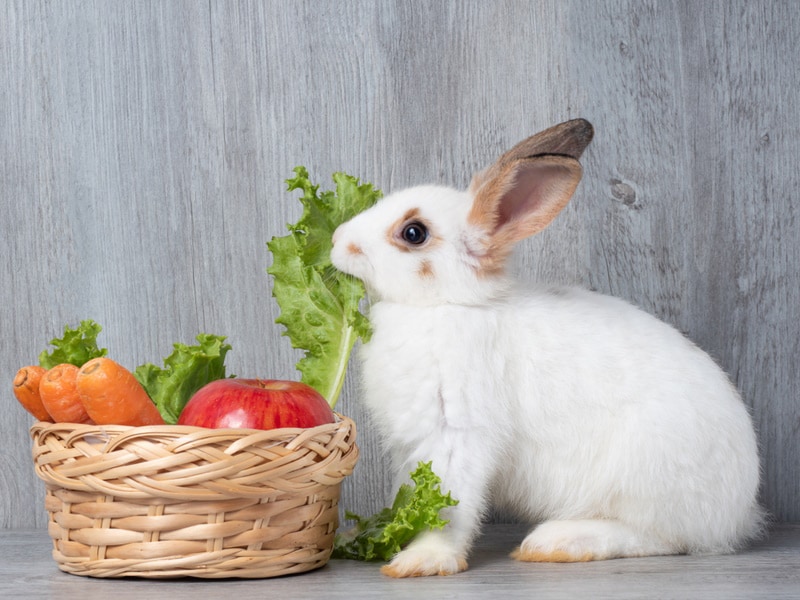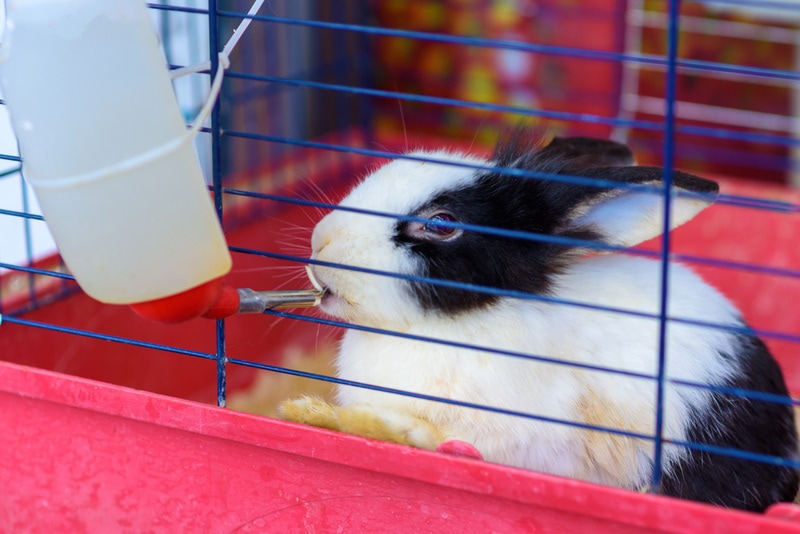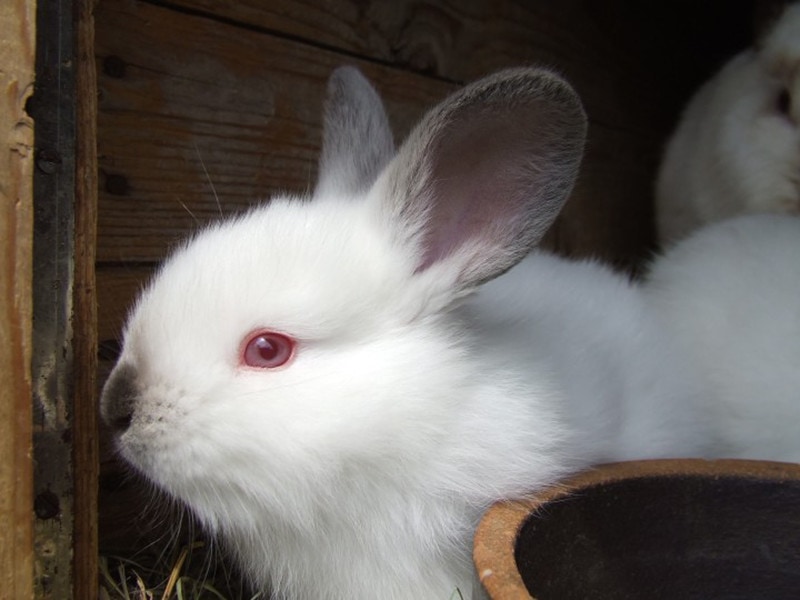Jersey Wooly Rabbit: Pictures, Care Guide, Lifespan & Traits
Updated on
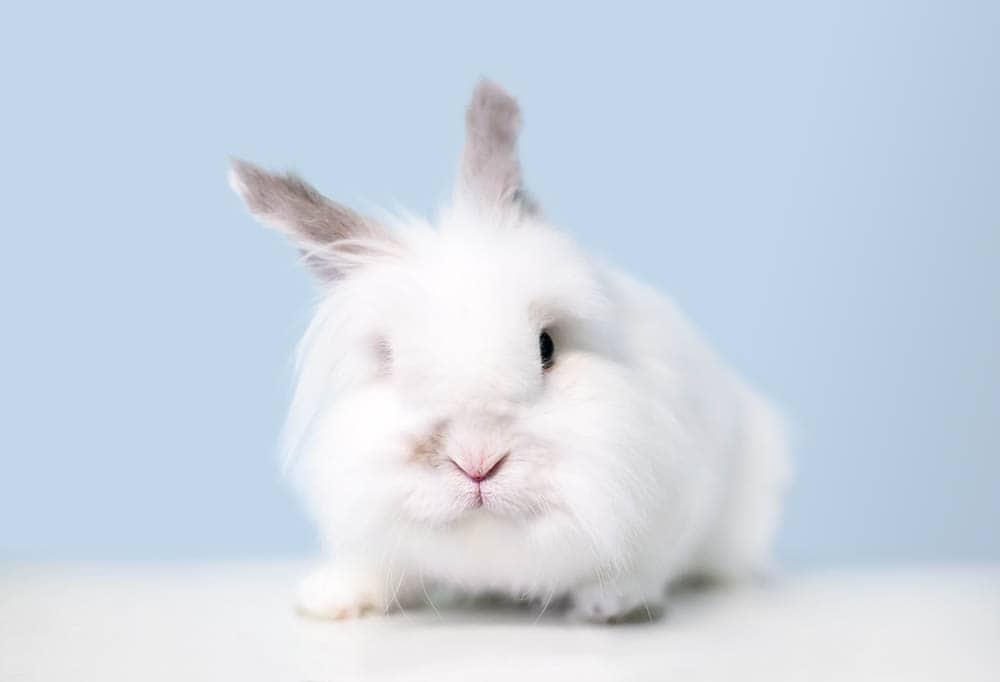
If you’re looking for a tiny rabbit that has a floofy coat and absolutely loves attention and affection, you should look no further than the Jersey Wooly rabbit!
This breed originated in New Jersey and was introduced to the American Rabbit Breeders Association (ARBA) in 1984 and officially recognized in 1988. Today, they are among the most popular rabbits for exhibition shows and as adorable pets.
| Size: | Dwarf |
| Weight: | 1–3 lbs. |
| Lifespan: | 7–10 years |
| Similar Breeds: | Netherland Dwarf, French Angora |
| Suitable for: | Seniors, single people, children, first-time owners |
| Temperament: | Docile, friendly, playful, affectionate |
The Jersey Wooly has a beautiful thick fur coat, which makes them quite popular as show rabbits. They get their luxurious coats from the two rabbit breeds used in their development.
The French Angora and the Netherland Dwarf created the small and wooly-coated Jersey Wooly. This tiny rabbit is a dwarf breed and only weighs 1 to 3 pounds. They are most commonly white, black, gray, or brown but come in a variety of patterns.
Jersey Wooly Rabbit Characteristics
How Much Do These Rabbits Cost?
The Jersey Wooly is relatively easy to find, and the price could range from $20 to $70. If you plan on using your rabbit for show, you will need to pay more, as rabbit breeders charge more for exhibition rabbits than pet rabbits.
You should find a Jersey Wooly breeder by searching online and posting messages through social media. Most breeders have websites, so finding one in your area shouldn’t be too difficult.
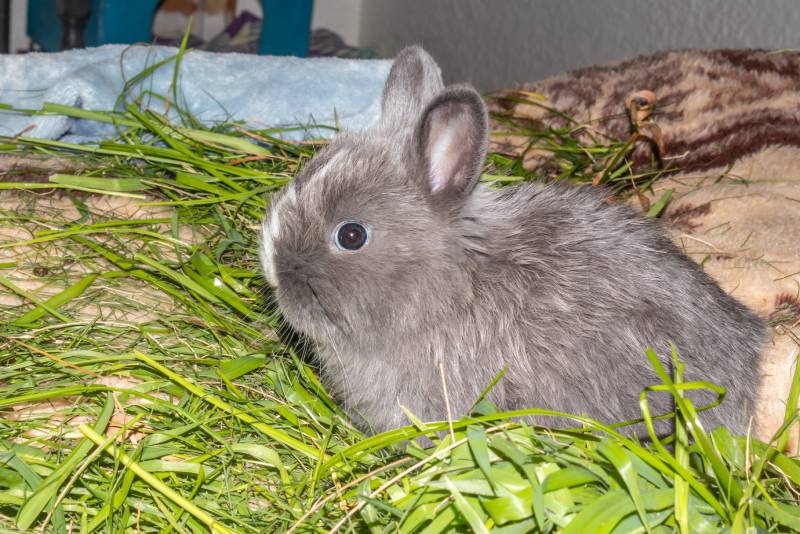
Temperament & Intelligence of the Jersey Wooly Rabbit
Jersey Wooly rabbits can make perfect pets for beginner rabbit owners. They are quite docile, sweet-natured, and gentle. They are also intelligent and affectionate yet playful, and they tend to not mind being picked up as much as other breeds. This makes them excellent pets for seniors or just about anyone looking for a soft and cuddly companion.
Do These Rabbits Make Good Pets? 👪
Jersey Wooly rabbits were bred to be family pets, making them affectionate and easy to handle. Since they are gentle and known to not kick or bite, they make excellent pets for children.
That said, be sure to teach everyone in your household how to handle a rabbit, no matter how young they are. Rabbits have sensitive spines, and if startled or not handled correctly, they can quite easily suffer from a spinal injury.

Does This Rabbit Get Along With Other Pets?
The Jersey Wooly is friendly and could get along quite well with other pets. However, they are prey animals and tiny, so they can be easily harmed, particularly by cats and dogs.
They should be kept separately from any pets that are potentially their predators. This means not allowing your other pets near your rabbit’s cage or letting them roam free when your other pets are in the same area.
They can be quite easily stressed out and potentially injure themselves, so it’s usually best if your only other pets are also rabbits. You can house a neutered male and spayed female, two litter sisters, or two litter brothers together.
 Things to Know When Owning a Jersey Wooly Rabbit
Things to Know When Owning a Jersey Wooly Rabbit
Food & Diet Requirements 🥕
Like all rabbits, this breed is an herbivore, but they have very specific diet requirements. About 80% of their diet should be high-quality hay, 10% should be veggies, 5% should be rabbit pellets, and 5% should be treats. They should also have access to clean water at all times.
Most rabbit owners purchase timothy hay, which should be left out for your rabbit at all times. You can leave water and hay in different locations in your home so they have constant and easy access.
Offered veggies should be dark, leafy greens, though other vegetables and fruit can be given sparingly as treats. Just be sure to do your research to understand what plants are toxic to rabbits.

Habitat & Hutch Requirements 🏠
Generally speaking, your Jersey Wooly’s enclosure should measure about 1 foot for every pound that they weigh. So, your bun’s cage will likely be about 2’ x 2’ — large enough for them to move around easily.
You can purchase an enclosure in a pet store or online or make one yourself. Some rabbit owners use a playpen, dog crate, or exercise pen instead of a cage. The substrate should be recycled paper, aspen, or timothy hay. You can also line the cage with a towel, rug, or even a bathmat.
Finally, you’ll want to set up a litter box that will enable your rabbit to eat and poop simultaneously. The litter box should be large enough for this, and you’ll want to use paper-based pelleted litter.
Typically, you’ll place hay on one side, which allows your rabbit to poop while they eat. You can use a cat litter box for this. Some rabbit owners place several litter boxes around the house so their rabbits don’t have to go too far to have dinner and use the bathroom.
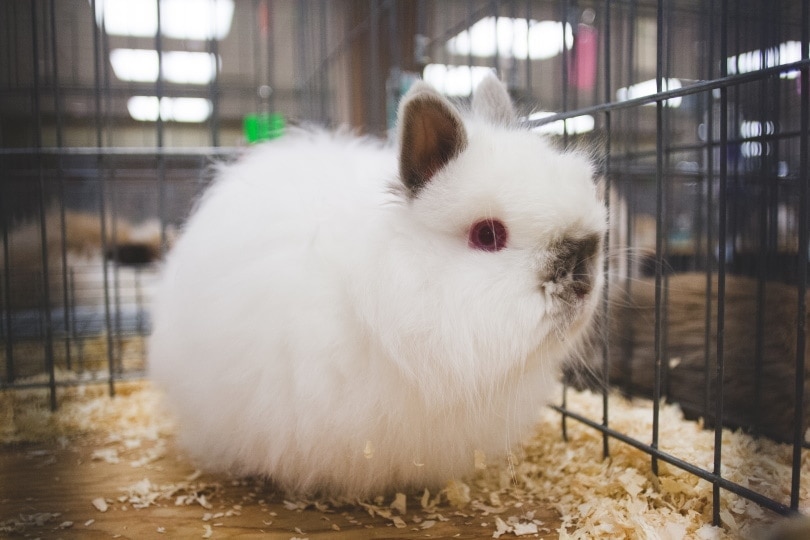
Exercise & Sleeping Needs 🐇
All rabbits need exercise outside their enclosure, so you’ll need to rabbit-proof parts of your home so they can safely stretch their legs.
If you can make it safe to do so, you should allow your Jersey Wooly to exercise outside too. You’ll need an enclosure for this so they don’t run away and to keep them safe from predators. But this should only be when it’s warm outside; this breed is definitely an indoor rabbit.
All rabbits should sleep about 8 hours every day, but it’s usually broken up into naps. This means they won’t sleep in one long stretch the way that we do.
Rabbits are crepuscular, so they are most energetic at dusk and dawn. They will sleep primarily in the middle of the night and from late morning to early evening.

Training 🥎
Training rabbits isn’t as easy as training dogs or cats, but they are smart enough, and it’s doable. The training can include things like coming when they are called and walking on a harness and leash.
Training the Jersey Wooly to use the litter box is one of the more important lessons. It can be accomplished through repetition and positive reinforcement with tasty treats.
Grooming ✂️
The only grooming that the Jersey Wooly truly requires is brushing once a week to prevent tangles, but they don’t need any trimming. You’ll need to brush them daily during the spring and fall shedding seasons.
As far as baths are concerned, rabbits are quite meticulous cleaners, so they never need one. But if they get into something that they need cleaning off, just remember to never submerge your rabbit in water.
Grooming will also include trimming their nails and feeding them enough hay and other fibrous material to prevent overgrown teeth. Lastly, you’ll need to clean their ears about once a month.
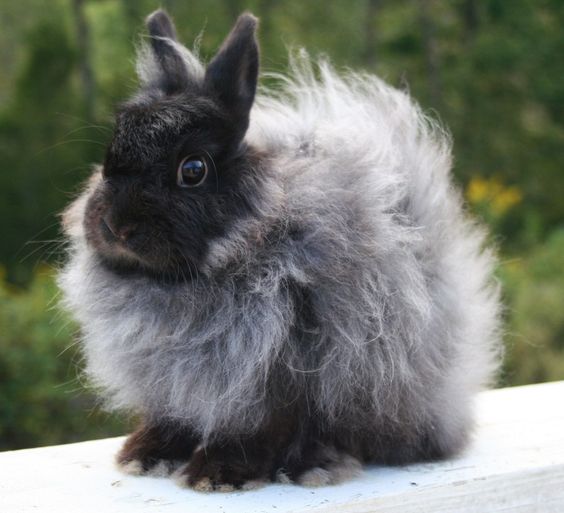
Lifespan and Health Conditions 🏥
The average lifespan of most domestic rabbits is 8 to 12 years, and the Jersey Wooly falls into this range at 7 to 10 years.
Rabbits in general are also prone to various health conditions, including the following.
- Dental disease
- Ear mites
- Pasteurellosis (also known as the snuffles)
- Gastrointestinal stasis
- Uterine cancer
- Head tilt
Male vs. Female
The primary difference between male and female Jersey Wooly rabbits is size. The males tend to be heavier and larger than the females, but it’s more difficult to tell the difference with rabbits this small.
Male Jersey Wooly rabbits tend to be more laidback than the females, and if two opposite-sex rabbits share a habitat, he might be protective of her. Females can be more territorial and like to take charge. Spaying and neutering your rabbits can help prevent destructive and mating behaviors.
 3 Little-Known Facts About the Jersey Wooly Rabbit
3 Little-Known Facts About the Jersey Wooly Rabbit
1. Jersey Wooly Rabbits are known by multiple names
As small as these rabbits are, they have a large number of nicknames! They are also known as:
- The Fluff of Fancy
- The Mug Head Rabbit
- The Mug-Head Bunny
- The “No-Kick” Rabbit
- The “No-Kick” Bunny
- The Wooly Bunny
2. The shape of their heads has given them one of their nicknames
The Mug-Head Rabbit nickname comes from how the Jersey Wooly’s head is shaped, which is like a square. This must have reminded someone of a mug, which is how they came by the nickname.
3. Jersey Wooly Rabbits can come in six patterns
Jersey Wooly rabbits can come in several colors and six patterns:
- Agouti: chestnut, chinchilla, opal, and squirrel
- Broken: white body with color patches or spots on the eyes, ears, nose, and body
- Pointed: white body with black or blue colors on the ears, nose, feet, and tail
- Self: the same color all over the body, which includes blue, black, chocolate, and lilac
- Shaded: colors on the ears, face, feet, and tail that go from darker to lighter, which include sable point, blue tortoiseshell, seal, and smoke pearl.
- Tan pattern: includes blue otter, black otter, silver marten, sable marten, and smoke pearl marten
Final Thoughts
Jersey Wooly rabbits make truly excellent pets! They are less shy than other breeds and are affectionate and gentle. They received one of their nicknames, “No-Kick” Rabbit, because they aren’t known to bite or kick their owners.
They still need a certain amount of care, though, so be sure to do your research before bringing one home. Also, while rabbits are often considered children’s pets, they can be easily stressed and injured, particularly when they are as tiny as the Jersey Wooly.
Whether you’re an experienced rabbit owner or brand new to owning a bun, the Jersey Wooly is a wonderful companion!
Featured Image Credit to: Mary Swift, Shutterstock

